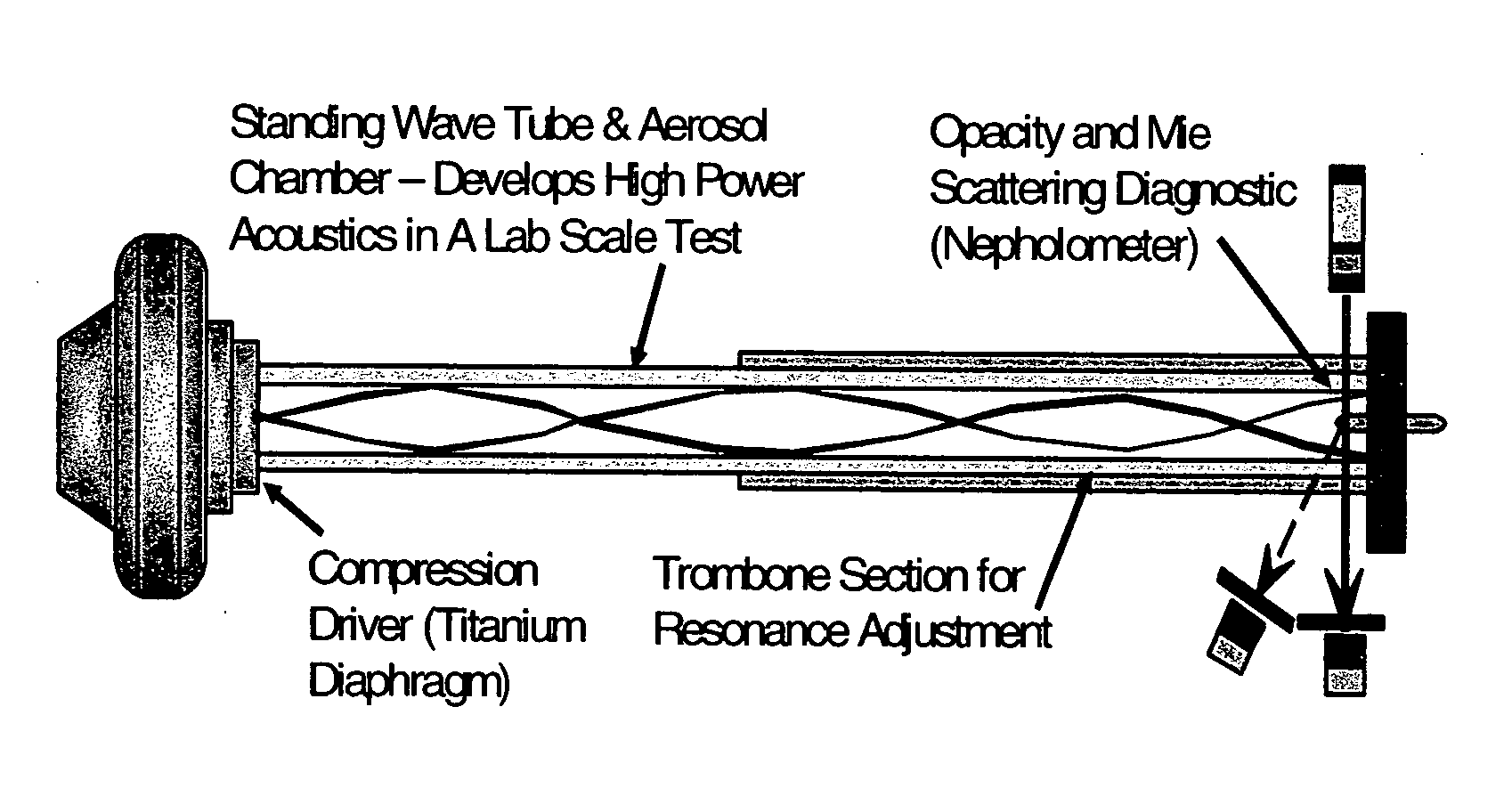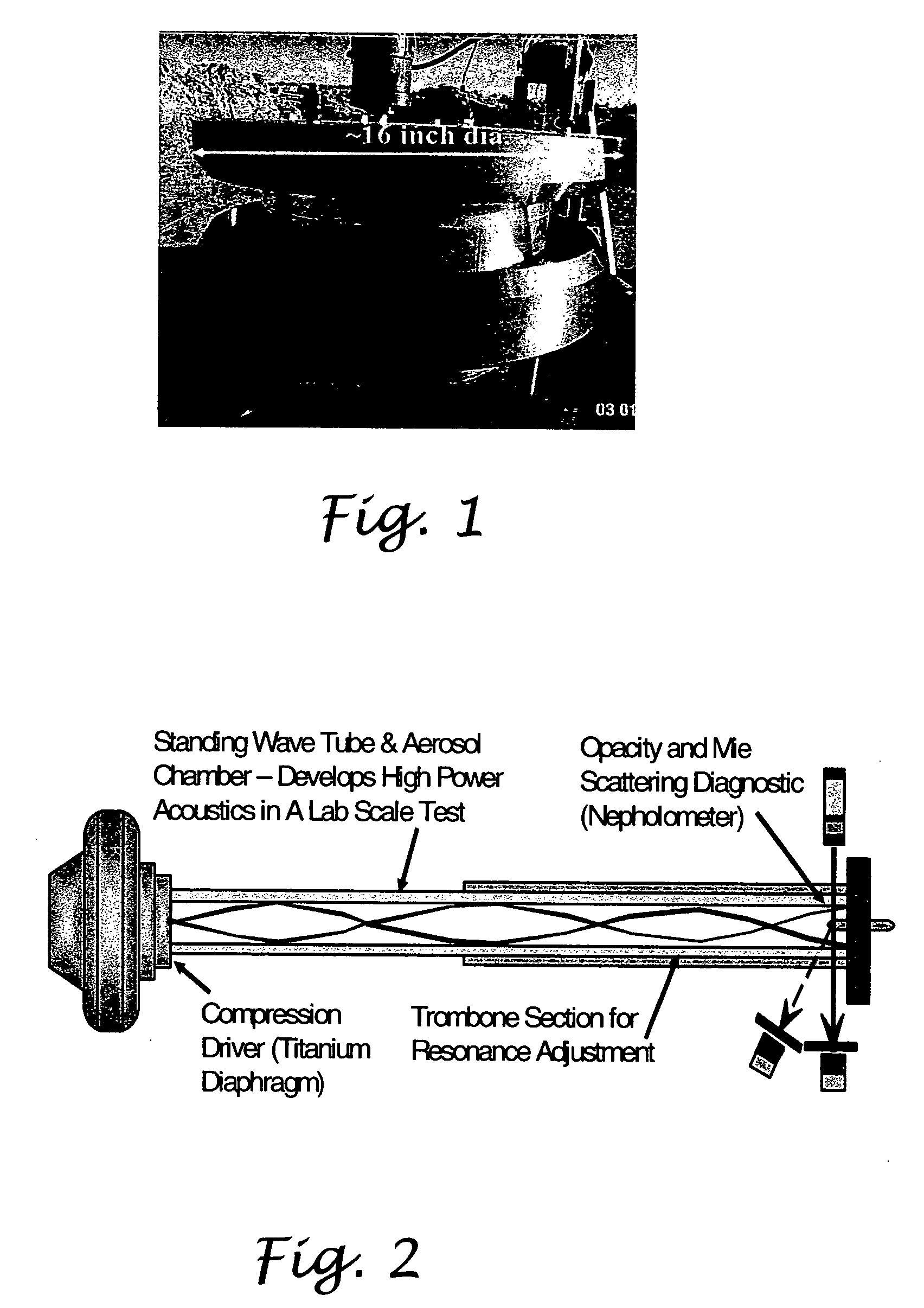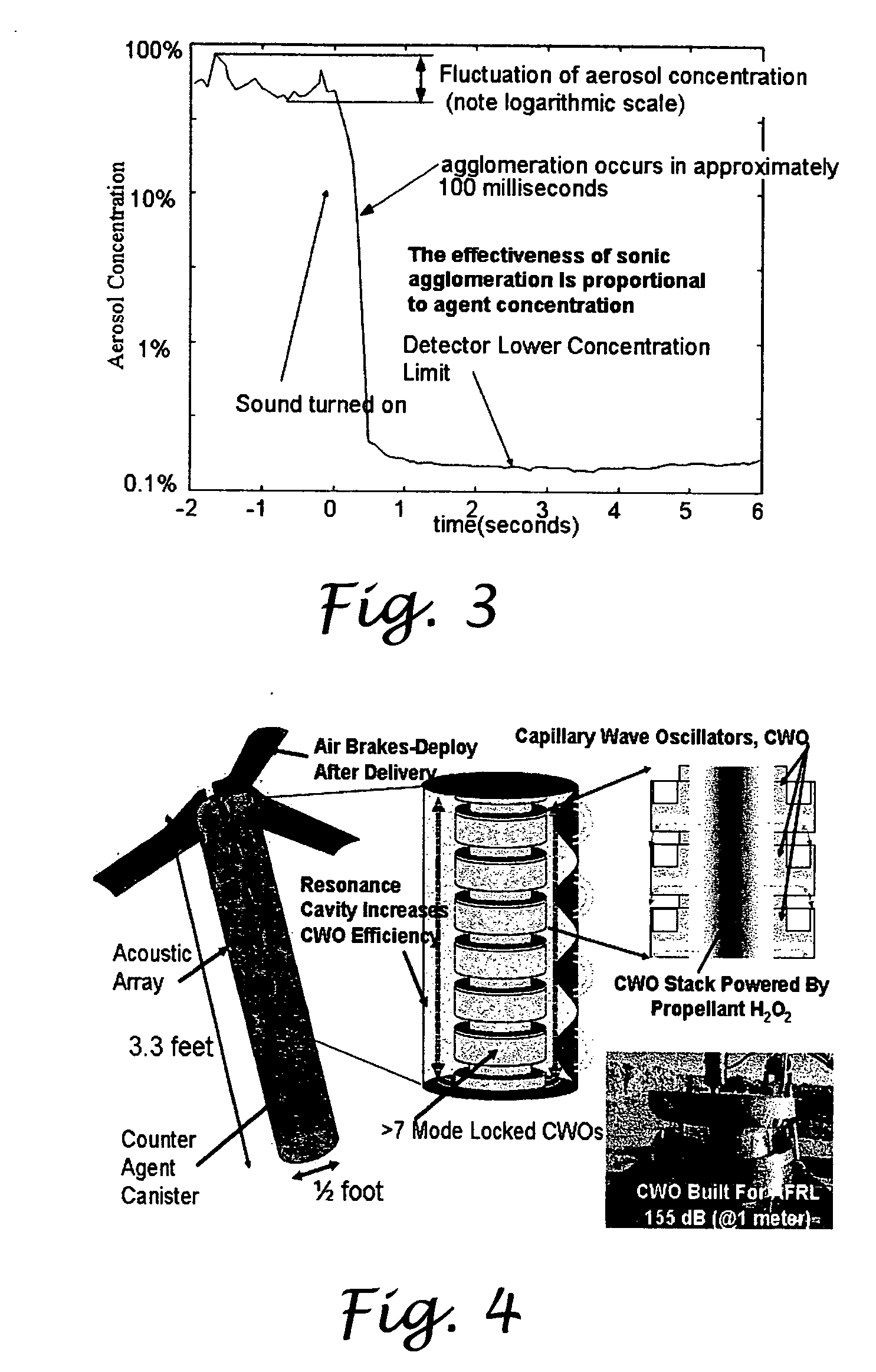Application of sonic particle scavenging process to threat aerosols
- Summary
- Abstract
- Description
- Claims
- Application Information
AI Technical Summary
Benefits of technology
Problems solved by technology
Method used
Image
Examples
Embodiment Construction
[0018] There are many ways to generate agglomeration; however, the use of intense acoustic waves and the turbulent exhaust products that result from making intense acoustic waves, have proved to be the most successful among these. To reference the rapidity at which intense sound causes aerosol particles to agglomerate, it is useful to summarize the most common mechanism within the art; thermal agglomeration. Thermal agglomeration involves the random motion of particles due to the continual bombardment of molecules in the suspending gas. This type of random motion is known within the art as Brownian motion. All aerosol particles suspended in a gas are imbued with Brownian motion. Within the art, collision and the subsequent combination of particles due to Brownian motion is referred to as thermal agglomeration. For aerosols consisting of only one size of particle, the number concentration, N(t), of aerosol particles undergoing pure thermal agglomeration obeys the equation: N(t)=No1...
PUM
 Login to View More
Login to View More Abstract
Description
Claims
Application Information
 Login to View More
Login to View More - R&D Engineer
- R&D Manager
- IP Professional
- Industry Leading Data Capabilities
- Powerful AI technology
- Patent DNA Extraction
Browse by: Latest US Patents, China's latest patents, Technical Efficacy Thesaurus, Application Domain, Technology Topic, Popular Technical Reports.
© 2024 PatSnap. All rights reserved.Legal|Privacy policy|Modern Slavery Act Transparency Statement|Sitemap|About US| Contact US: help@patsnap.com










